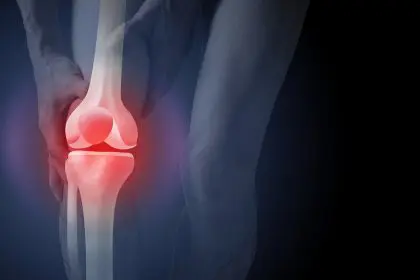When someone undergoes gastric surgery, the focus typically centers on recovery and healing. However, a condition called dumping syndrome can emerge that fundamentally alters how the body processes food, affecting nearly half of all patients who have stomach operations.
This digestive disorder occurs when food rushes too quickly from the stomach into the small intestine, bypassing the normal, gradual process that allows proper nutrient absorption. The condition transforms simple meals into potential triggers for a cascade of uncomfortable and sometimes debilitating symptoms.
Medical professionals have identified this syndrome as one of the most common long-term complications following gastric procedures, yet many patients remain unaware of its existence until symptoms begin interfering with daily activities. The condition can develop immediately after surgery or emerge months, even years later, making awareness crucial for anyone who has undergone stomach-related procedures.
Understanding the body’s digestive disruption
The human digestive system operates like a carefully orchestrated machine. Under normal circumstances, food enters the stomach where acids and enzymes break it down gradually before releasing small amounts into the small intestine for nutrient absorption. This controlled process ensures the body can extract maximum nutrition while maintaining stable blood sugar levels.
Surgical alterations to the stomach disrupt this natural rhythm. When surgeons modify the stomach’s structure or remove portions of it, the organ loses its ability to regulate food release effectively. Instead of the measured, controlled emptying that characterizes healthy digestion, food floods into the small intestine in large quantities.
This rapid transit creates a domino effect throughout the digestive system. The small intestine, unprepared for such large volumes of partially digested food, struggles to process the sudden influx. The result manifests as a collection of symptoms that can range from mildly uncomfortable to severely disruptive.
Approximately 50 percent of individuals who undergo gastric surgery experience some form of dumping syndrome, though the severity varies significantly among patients. The type of surgical procedure influences risk levels, with certain operations carrying higher probabilities of developing the condition.
The two faces of dumping syndrome
Medical experts classify dumping syndrome into two distinct categories based on timing and underlying mechanisms. Each type presents unique challenges and requires different management approaches.
The first type, known as early dumping syndrome, strikes within 10 to 30 minutes after eating. This immediate reaction occurs when the surgically altered stomach cannot adequately store or process food, leading to rapid emptying into the small intestine. The sudden influx of food creates physical distress as the digestive system attempts to cope with the overwhelming volume.
Early symptoms include intense bloating that can make patients feel as though their abdomen might burst. Diarrhea often follows, sometimes with alarming urgency that disrupts normal activities. Nausea frequently accompanies these symptoms, occasionally progressing to vomiting that provides temporary relief but leaves patients weakened and dehydrated.
Abdominal cramping adds another layer of discomfort, with pain that can range from mild to severe. Many patients report hearing audible gurgling sounds from their stomach as undigested food moves through their intestines. Additional symptoms may include rapid heartbeat, skin color changes, lightheadedness, and overwhelming fatigue that can persist for hours.
The second type, late dumping syndrome, affects approximately 25 percent of gastric surgery patients and operates through a different mechanism. This delayed reaction can appear months or years after surgery, often catching patients off guard when they believe their recovery is complete.
Late dumping syndrome occurs when undigested carbohydrates reach the small intestine and trigger an excessive insulin response. This hormonal reaction causes blood sugar levels to plummet rapidly, creating symptoms that mirror severe hypoglycemia.
Patients experience profound weakness that can make simple tasks feel overwhelming. Mental confusion becomes common, affecting concentration and decision-making abilities. Fatigue sets in with crushing intensity, often accompanied by increased hunger that seems impossible to satisfy.
Physical tremors, particularly in the hands, signal the body’s struggle with low blood sugar. Irritability emerges as the brain lacks adequate glucose, making patients feel short-tempered and emotional. Excessive sweating and heart palpitations complete the symptom profile, creating a frightening experience that can last several hours.
Special considerations for younger patients
Children who undergo corrective surgeries for congenital abnormalities or bariatric procedures face unique challenges with dumping syndrome. Diagnosing the condition in pediatric patients proves more difficult because children may not express symptoms in the same way adults do.
Late dumping syndrome appears more frequently in children, and the consequences of low blood sugar can be particularly severe. Untreated hypoglycemia in developing brains may contribute to developmental delays or trigger seizures, making prompt recognition and treatment essential.
Parents and caregivers must remain vigilant for subtle changes in behavior, eating patterns, or energy levels that might indicate dumping syndrome. Children may become fussy, lethargic, or refuse to eat without being able to articulate why they feel unwell.
Recognizing when professional help becomes necessary
Certain symptoms warrant immediate medical attention, particularly for patients with recent surgical history. Regular stomach pain following meals, persistent nausea, or frequent vomiting episodes should prompt consultation with healthcare providers.
The timing of symptoms provides important diagnostic clues. Discomfort that consistently appears within 30 minutes of eating suggests early dumping syndrome, while delayed symptoms occurring one to three hours after meals may indicate the late variety.
Distinguishing dumping syndrome from other medical conditions requires professional evaluation. Sharp abdominal pain accompanied by fever could signal appendicitis or other serious complications requiring emergency treatment. Healthcare providers can perform appropriate tests and examinations to determine the underlying cause of symptoms.
Transforming daily life through dietary management
While dumping syndrome can significantly impact quality of life, many patients find substantial relief through strategic dietary modifications. Working with registered dietitians who understand post-surgical nutrition needs proves invaluable in developing effective meal plans.
The foundation of successful management rests on eating smaller, more frequent meals throughout the day. This approach prevents overwhelming the altered digestive system while maintaining adequate nutrition. Reducing sugar intake becomes crucial, as high-sugar foods tend to trigger symptoms more readily.
Increasing protein consumption helps slow digestion and provides sustained energy without causing rapid blood sugar fluctuations. Many patients discover that avoiding liquids during meals prevents diluting digestive enzymes and reduces the likelihood of rapid stomach emptying.
Over time, most patients notice gradual improvement in their symptoms as their bodies adapt to the new digestive reality. This adaptation process requires patience and consistency, but the majority of individuals eventually find ways to enjoy meals without fear of triggering uncomfortable reactions.
The journey with dumping syndrome, while challenging, does not have to define one’s relationship with food permanently. With proper understanding, medical support, and dietary adjustments, patients can reclaim control over their digestive health and maintain fulfilling, active lifestyles despite their surgical history.















